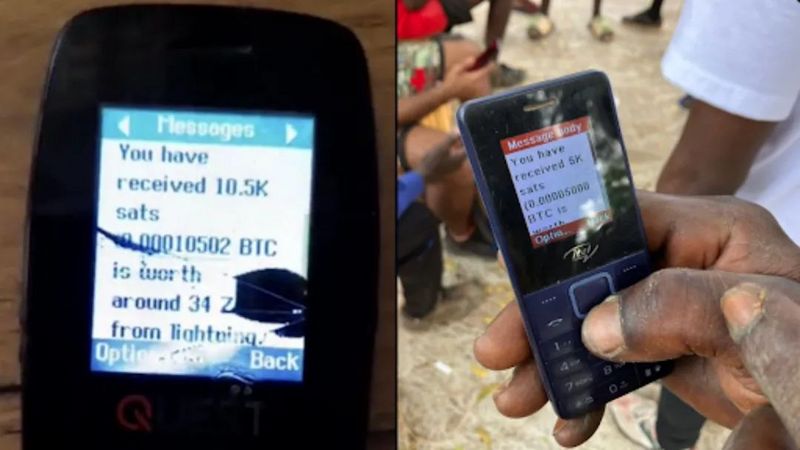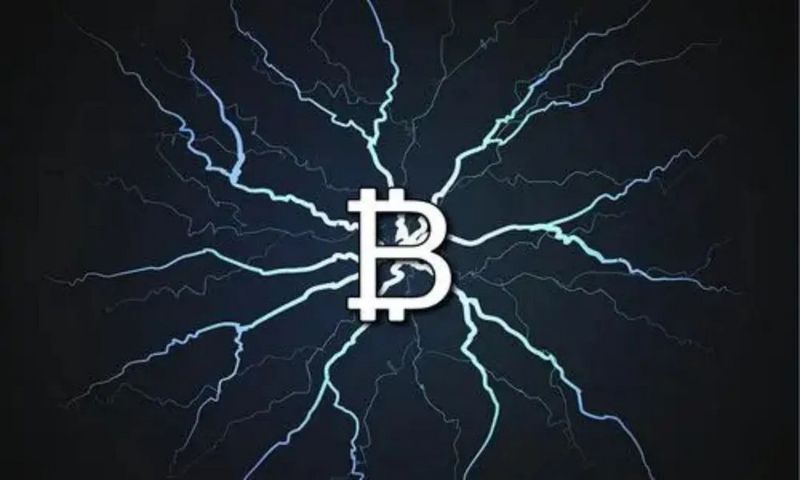A review of the top ten significant developments in Bitcoin in 2022
Authors: Cory Klippsten, Tomer Strolight, Sam Callahan
Compiled by: FastDaily
The price crash and the collapse of cryptocurrencies dominated the headlines in 2022, but it can still be said that 2022 was also a year of significant progress for Bitcoin.
In 2022, we saw Bitcoin as a protocol enabling widespread innovation, meeting any needs identified by developers and entrepreneurs without requiring any changes to the protocol.
We have listed 10 important developments in Bitcoin for 2022, so as the year comes to a close, let’s take a look at what they are.
1. Another Year of 100% Uptime
Bitcoin's biggest achievement this year remains Bitcoin itself. Bitcoin continues to operate perfectly, with a block appearing approximately every 10 minutes, and its token issuance fully complies with the specifications in Satoshi Nakamoto's 2008 white paper. There were no emergency reboots, no hard forks, no chain splits, and no protocol-level hacks or vulnerabilities. Yet, in the face of everything in 2022, Bitcoin once again provided 100% uptime and was available for anyone in the world to use throughout the year. Billions of dollars worth of Bitcoin were transferred on its blockchain every day.
Bitcoin achieved all of this without any foundation support, no direct employees, no leaders, or venture capitalists. Therefore, the ongoing development relying on Bitcoin's reliability and predictability could continue uninterrupted for another year, with confidence in doing so for the foreseeable future.
Notably, the remaining items on this list do not require any changes to Bitcoin's base layer consensus rules.
2. Development of the Lightning Network
While Bitcoin's base layer remained stable, its most important scaling protocol, the Lightning Network, experienced massive growth and development in 2022. The Lightning Network enables instant, low-cost off-chain payments, eliminating the need to wait for block confirmations for transactions. It is fully decentralized and permissionless, enhancing Bitcoin's scalability while still leveraging the security and settlement guarantees of the Bitcoin base layer. In 2022, the publicly visible liquidity capacity of the network rose from 1,058 BTC to over 4,771 BTC.

The number of Lightning Network channels grew by 80%, increasing from 37,298 to 67,339.
The number of publicly visible Lightning Network nodes increased by +88%, rising from 8,295 nodes to 15,636 (although the growth rate slowed in the second half of the year).
Overall, the growth of the Lightning Network this year was astonishing, driven by the launch of numerous wallets, better tools built for users, and the generation of more educational resources. As Bitcoin users sought to exchange value peer-to-peer via the Lightning Network, instant, low-cost payments (often under 1 cent) became commonplace in 2022.
3. El Salvador
In 2022, under President Nayib Bukele's economic freedom and Bitcoin policies, El Salvador underwent the greatest national transformation in its history. Bukele appeared on the cover of Bitcoin Magazine's year-end edition as the first pioneer and leader to dare to embrace pure Bitcoin and the economic freedom it offers to the people.

In his column, Bukele called on Bitcoin users around the world to recognize that El Salvador's struggle against global elites is also their struggle. El Salvador's embrace of Bitcoin as currency demonstrates to everyone that, despite mainstream media's many concerns, it truly understands the practical implications of revolutionary currency. While U.S. regulators and political elites were deceived by figures like Sam Bankman-Fried, Bitcoin brought prosperity to El Salvador. Its tourism numbers surged, GDP continued to grow, and the country kept increasing its satellite presence.
In October, El Salvador established the world's first "Bitcoin Embassy" in Lugano. This chamber of commerce will be led by Salvadoran Bitcoin miners and investors, Bitcoin diplomats, and "honorary consul" Josue Lopez. In November, a Bitcoin office was established within the Salvadoran president's office. The office was created to meet the growing demand from global investors for information. The Bitcoin office further established a template for other countries to replicate on the path to hyper-Bitcoinization. El Salvador ended the year in the most Bitcoin way possible—President Bukele announced that El Salvador would begin purchasing one Bitcoin every day.
4. Machankura—Bitcoin Transactions via Text in Africa

This new service was coded within weeks by African developer Kgothatso Ngako, who noticed a problem—most Africans have basic mobile phones but lack reliable internet connections—so he created a solution. Machankura enables Africans to receive and spend Bitcoin via SMS without needing an internet connection.
A report from Caribou shows that 94% of financial transactions in Africa are conducted via SMS, while only 6% are done through mobile applications. This new service allows individuals across Africa to use Bitcoin on technology they are already familiar with for the first time. Projects like Machankura will help drive Bitcoin adoption in regions that need digital currency the most.
5. Taro—Assets on the Lightning Network
This year, Lightning Labs proposed a protocol to Bitcoin and the Lightning Network that aims to allow the minting, sending, and receiving of assets on the network. By leveraging Bitcoin's latest protocol upgrade, Taproot, Taro theoretically allows for the issuance of any type of asset on the Bitcoin blockchain while still using the immutable verification of Bitcoin's proof-of-work consensus mechanism. Taro could enable the issuance of various assets such as stablecoins, stocks, and bonds on top of the Bitcoin protocol, opening the door to more use cases and functionalities on the network.
6. Impervious.ai—The First P2P Lightning-Native Browser

Impervious Technologies released the first web browser based on Bitcoin's second-layer scaling system—the Lightning Network. It is a peer-to-peer web browser that provides a full suite of communication, data transfer, and Lightning payment tools without any intermediaries.
This manifests as secure peer-to-peer messaging, P2P video calls, P2P workspaces, decentralized identity management, decentralized data storage, and direct monetization of user data. All these tools are fully encrypted, eliminating centralized intermediaries that collect and sell user data. By leveraging the decentralized nature of Bitcoin and the Lightning Network, Impervious Technologies hints at what the future of the internet could look like.
7. FediMints—Collaborative Custody
FediMint is a new method of Bitcoin custody that helps secure each other's Bitcoin and privacy by forming collaborative custody communities. This form of custody leverages the inherent fact that humans trust those closest to them. It uses technologies such as federated and (David) Chaumian e-cash mints to cryptographically maintain privacy among individuals within a group while allowing them to share Bitcoin custody for the entire group. This custody solution offers the potential to scale Bitcoin, improve privacy, and reduce on-chain fees, enabling more individuals to self-custody Bitcoin globally.
8. Value-4-Value—Embedding Payment Functionality Anywhere
Value-4-Value is a new method of content publishing where creators receive value after "customers" enjoy content via the Lightning Network. Over 10,000 content creators have implemented Value-4-Value on their podcasts, while solutions like LightningAddresses and Bolt-12 invoices are providing this possibility for all other types of content, with expectations for rapid growth in 2023.
9. Plebnet Lightning—Community Tools to Enhance Lightning Functionality
This informal Telegram group, composed of ordinary people interested in running their own Lightning nodes, is about to surpass 5,800 members.
Participants not only support each other on best practices, but community members have developed and released a plethora of open-source applications that make it easy for anyone to access some of the most advanced features of the Lightning Network. The sdLightning Terminal is a browser-based interface for managing channel liquidity on self-hosted Lightning nodes, executing submarine swaps via the Lightning Loop service, categorizing channels, and integrating loopd, poold, and faraday daemon. Bitcoin's balance makes it easy to balance channel liquidity, allowing for seamless publishing of Lightning transactions to balance inflows and outflows. LNDg and Lightning Jet provide similar functionalities with more advanced features for monitoring nodes and maximizing efficiency.
10. Gridless Computing Using BTC Mining
People around the world live in environments with very little, very expensive, or no electricity at all. Bitcoin mining is changing all of that. Twitter founder Jack Dorsey shared an example where he provided power to a rural village in Kenya while protecting the Bitcoin network with excess hydroelectric power, reducing electricity costs for 2,000 people (500 households) from about $10 per month to just $4.
This is far from an isolated example; last December, another $2 million funding round led by Stillmark VC and Block will be used to leverage Bitcoin mining to increase energy supply across Africa while further decentralizing and securing the Bitcoin network.










